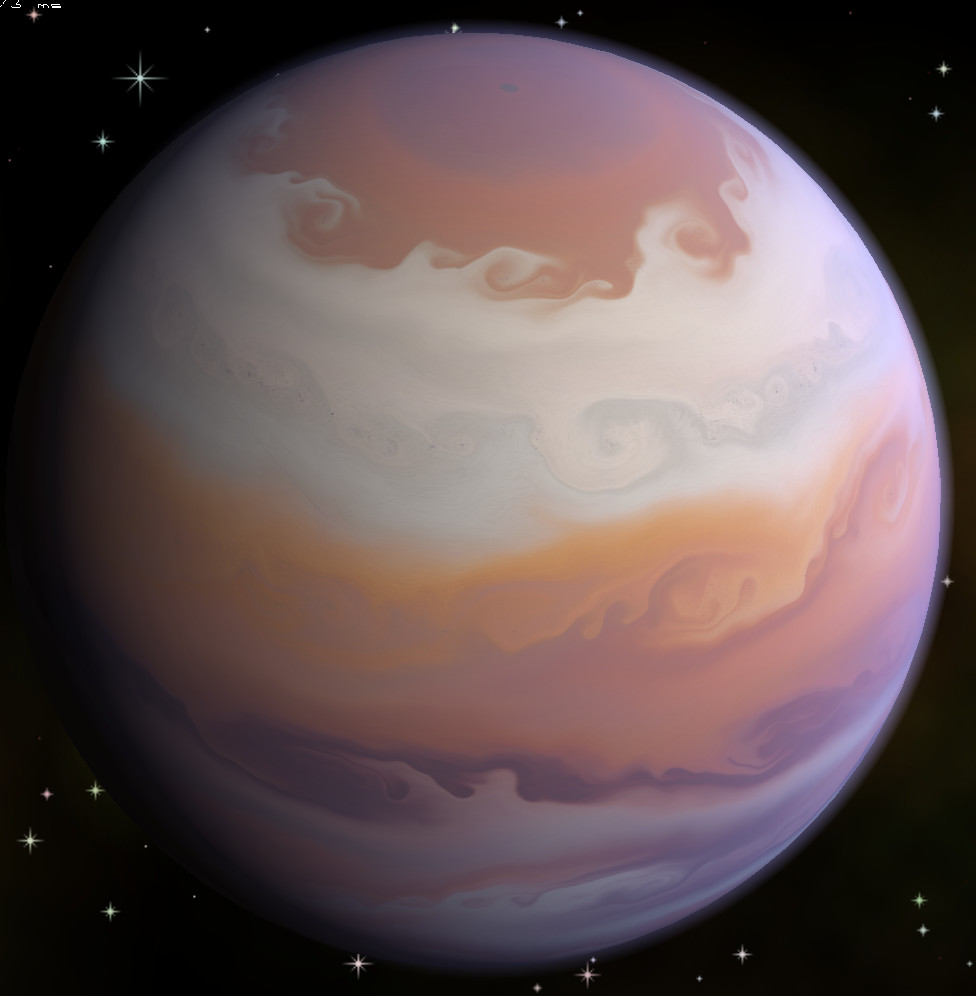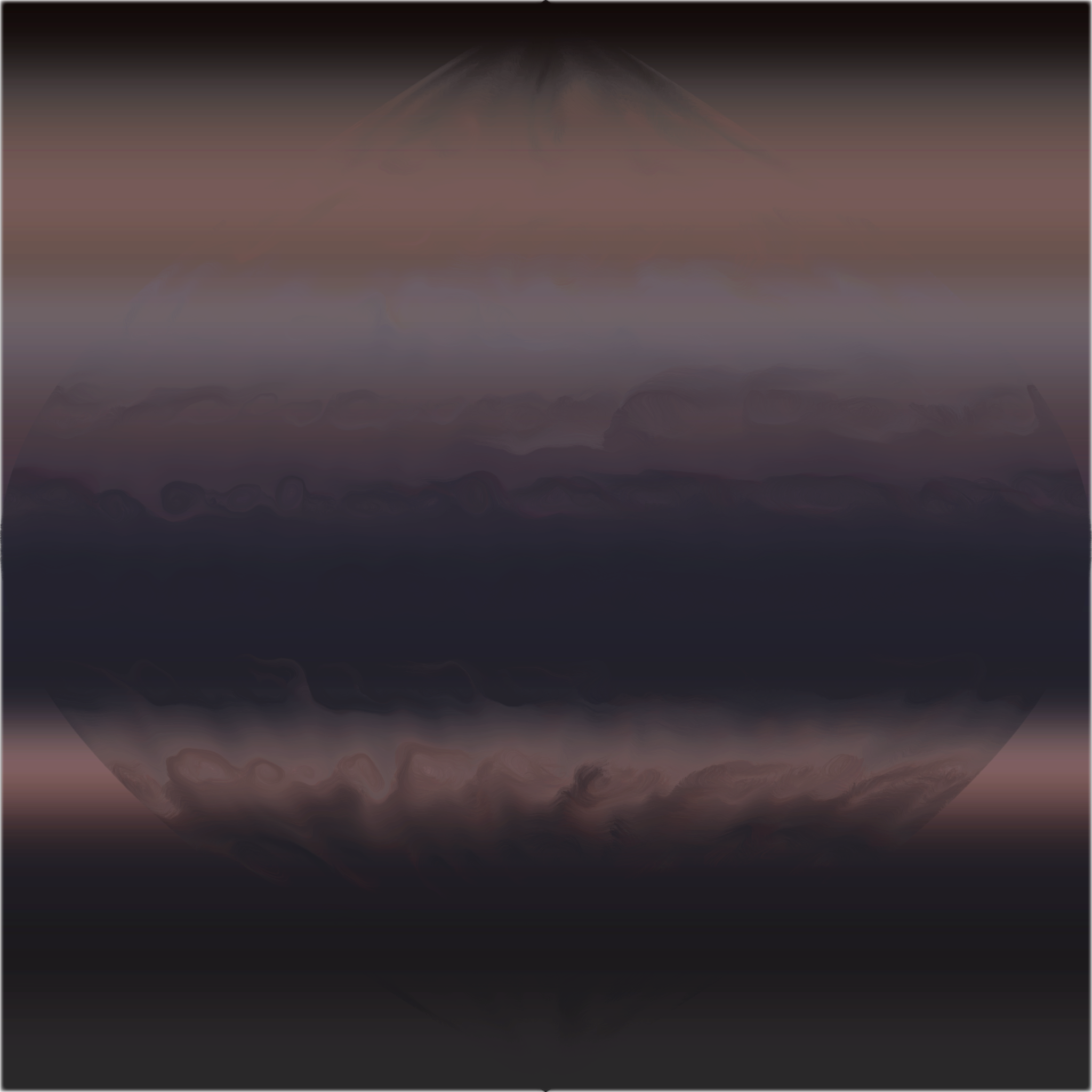The project was inspired by "Gaseous Giganticus", a program made by Stephen M. Cameron. This program creates fantastic looking textures for gas planets, with detailed vortices and swirls:
The project was inspired by "Gaseous Giganticus", a program made by Stephen M. Cameron. This program creates fantastic looking textures for gas planets, with detailed vortices and swirls:

It generates these textures by moving millions of particles across a sphere using flow maps generated from curl noise to simulate fluid like behaviour. As is the software is very useful for creating assets, but in games the result can be a little static. Compare this to the planet visuals of Alien: Isolation, another one of my favourite games:
This planet looks very dynamic, you can look at it for a long time and still not see any repeats. However, the details differ a lot from the nice textures generated using Gaseous Giganticus.From the limited information I could find on it online, it has been made using some sort of baked fluid sim and some noise overlays.
I was curious if it was possible to create something that hit a sort of middle ground between the two, with details similar to gaseous giganticus, but running in real time and changing over time. I believed this was possible as the original software moved the particles in a large for-loop on the CPU. By using compute shaders to move the particles in parallel on the GPU, it could be sped up a good bit.
As a start, I wrote code to store the particle positions and lifetime in a buffer texture. This in itself comes with a slight challenge, as the particles move on a sphere. This means you have to choose a certain mapping to convert surface coordinates to a position on the texture. I chose a sinusoidal mapping. The texture for the planet's surface then looks something like this:

By using a sinusoidal mapping you have a roughly equal density across the surface. The main advantage, though, is that the math to convert between coordinates becomes really simple if you store the particle positions in polar coordinates:
y = tex_height*phi/pi
x = tex_width*(theta/(2*pi)-.5)*sin(phi)In the compute shader for movement I can then just use the polar coordinates, and when writing and reading from the surface texture the mapping can be used. By then generating curl noise in polar coordinates as well, we can easily sample this using the x and y coordinates of the particle directly. To get the moving particles to look like a a planet, I initialise the particles from a gradient based on their latitude. Then I blend the particles colour with the existing colour with some opacity. Lastly, the texture is blurred and slowly fades back to a center colour, resulting in the following:
All in all, there were some interesting optimisations to be made for both visual. Because the particles respawn, their opacity fades in and out over their lifetime. To not have them all die at the same time, I respawned them in batches, resetting only a part of the buffer. Here you see the particle buffer blocks being respawned one by one:
To generate the flow map, a 3D curl noise has to be calculated and evaluated at all points on the sphere. Additionally, to make the noise dynamic, I also move the noise over time. This means the curl map has to be updated regularly. This can be a rather costly. To get around this, I generate the octaves of noise one by one using a compute shader that calculates a single layer and adds it to the BA channels. THen I use a second shader to move it to the RG layers where it is sampled once the generation is done. On this texture you can see the noise slowly being built up:
Using a fragment shader, I lastly blurred the edge of the resulting sphere to make it look a bit softer as a final touch:
The resulting shader runs in real-time, hitting 80 fps even with 4 million particles (on my modest rig). For performance, it would even still be possible to save the texture and flow map at an instance and use that in game.